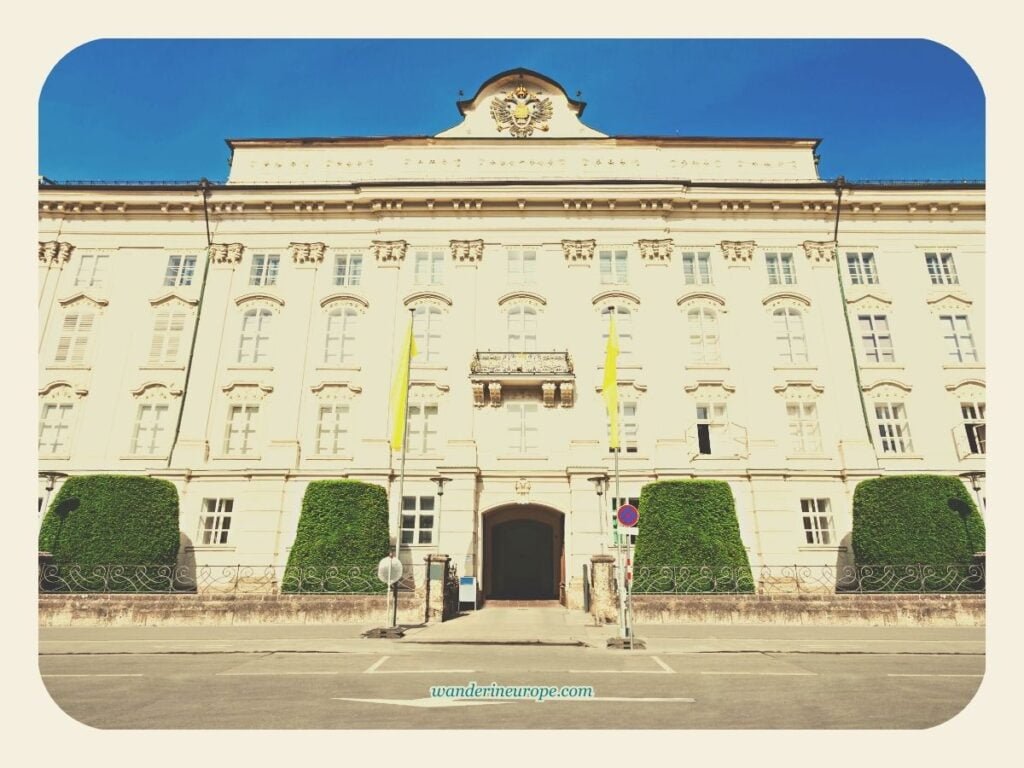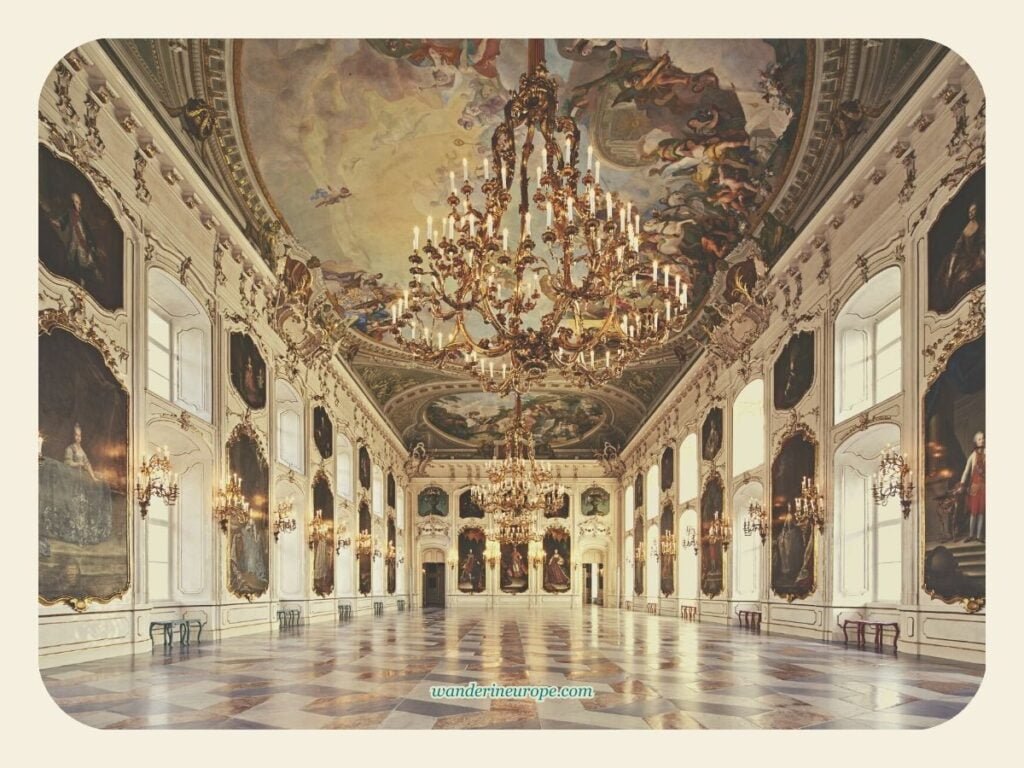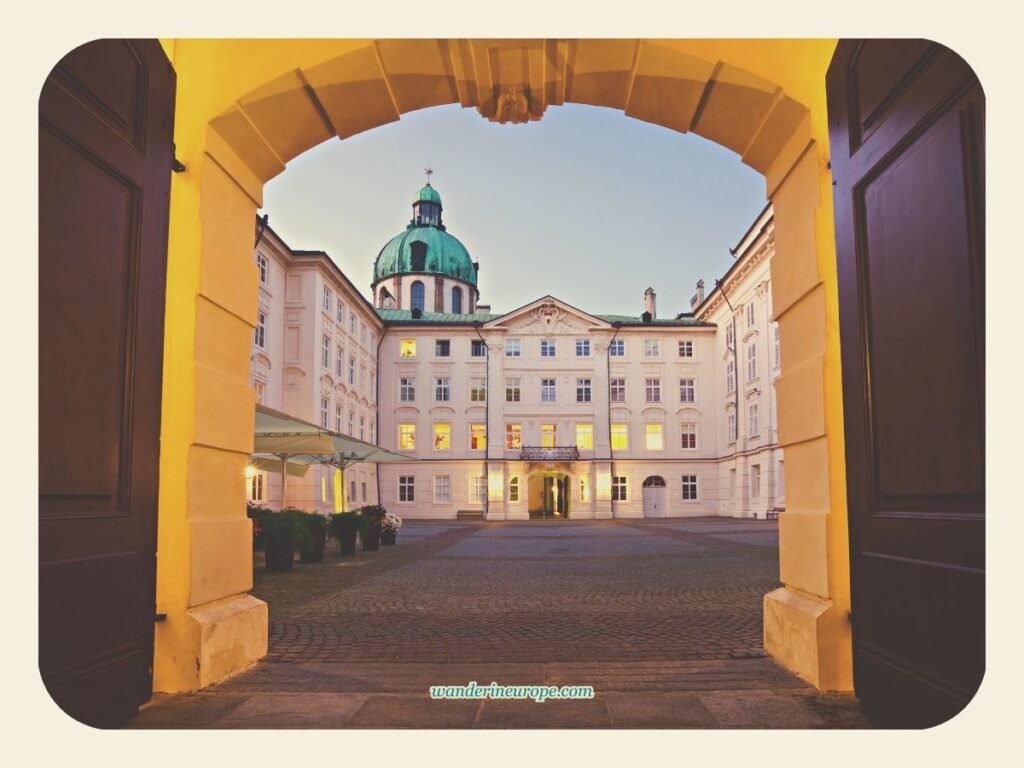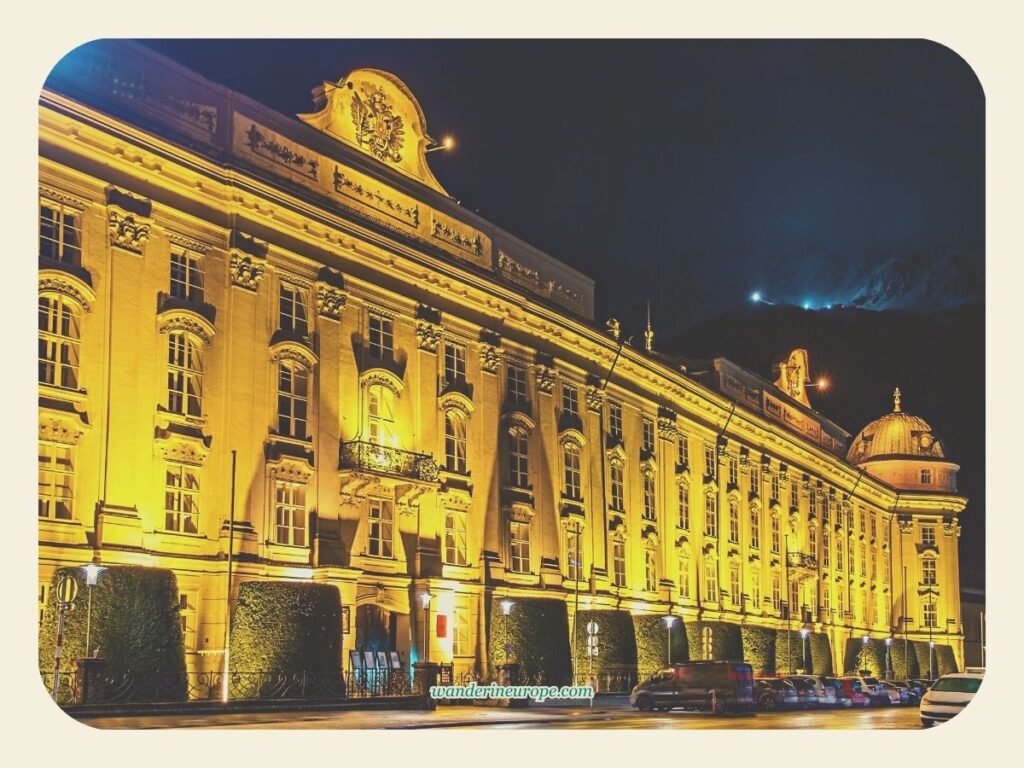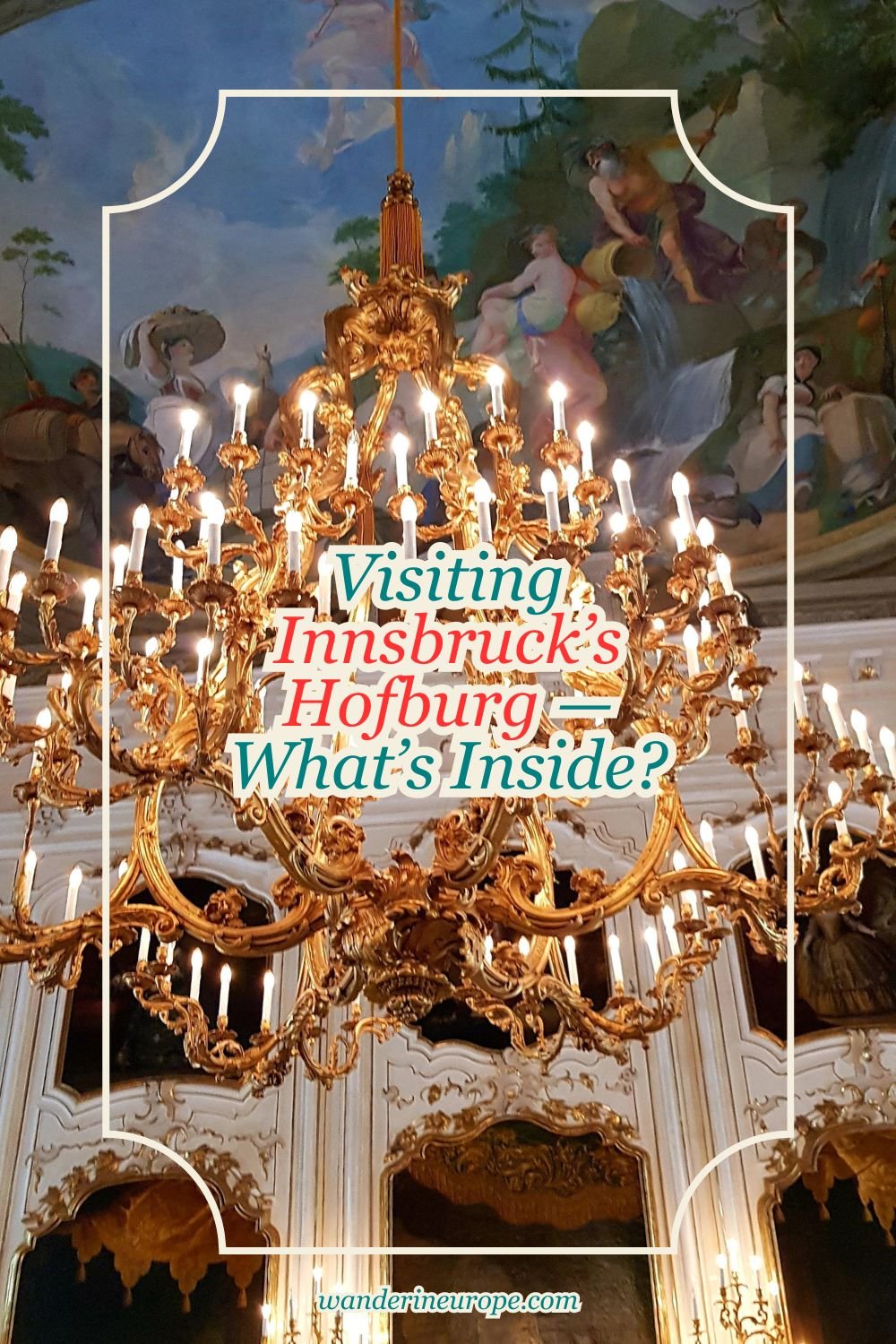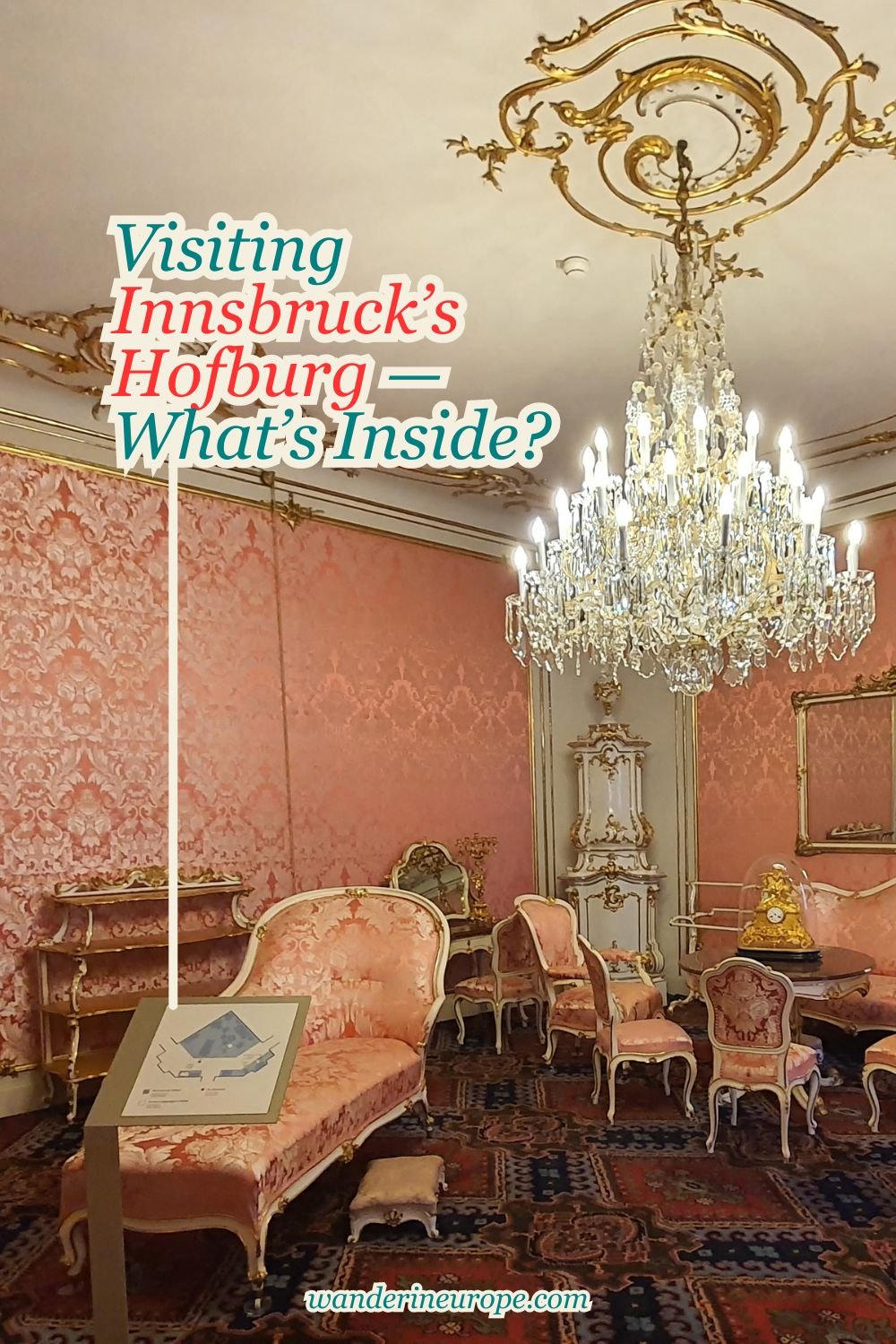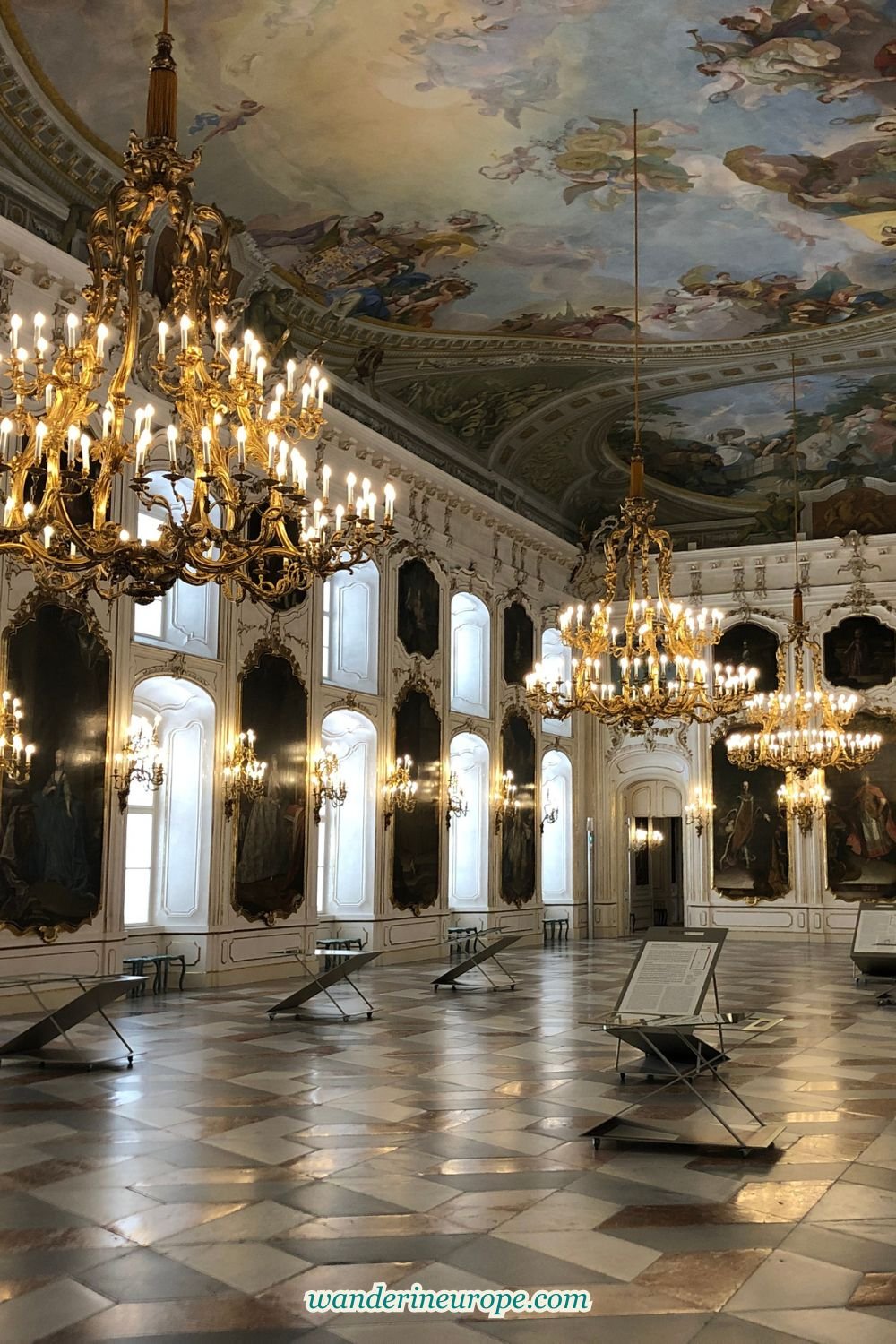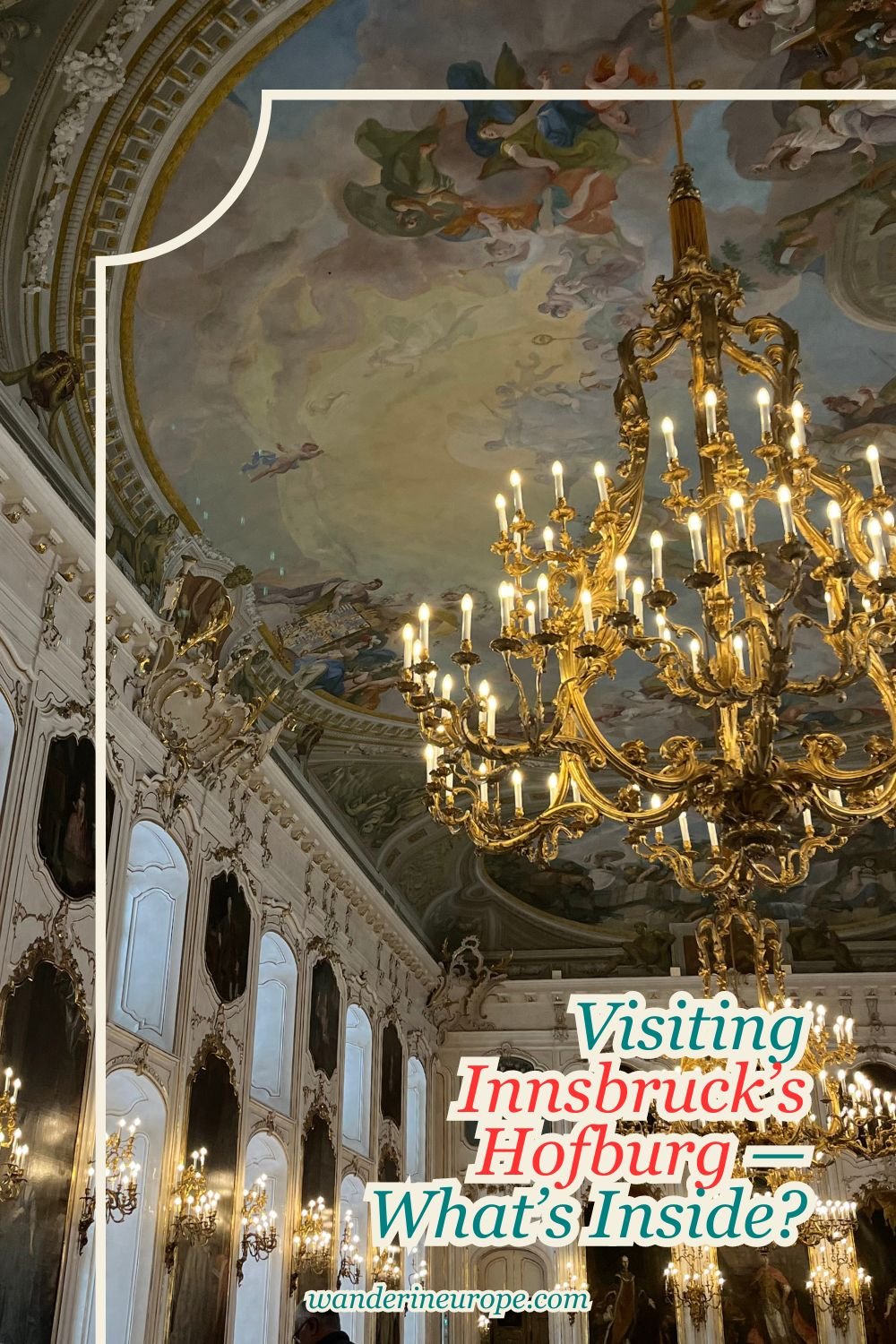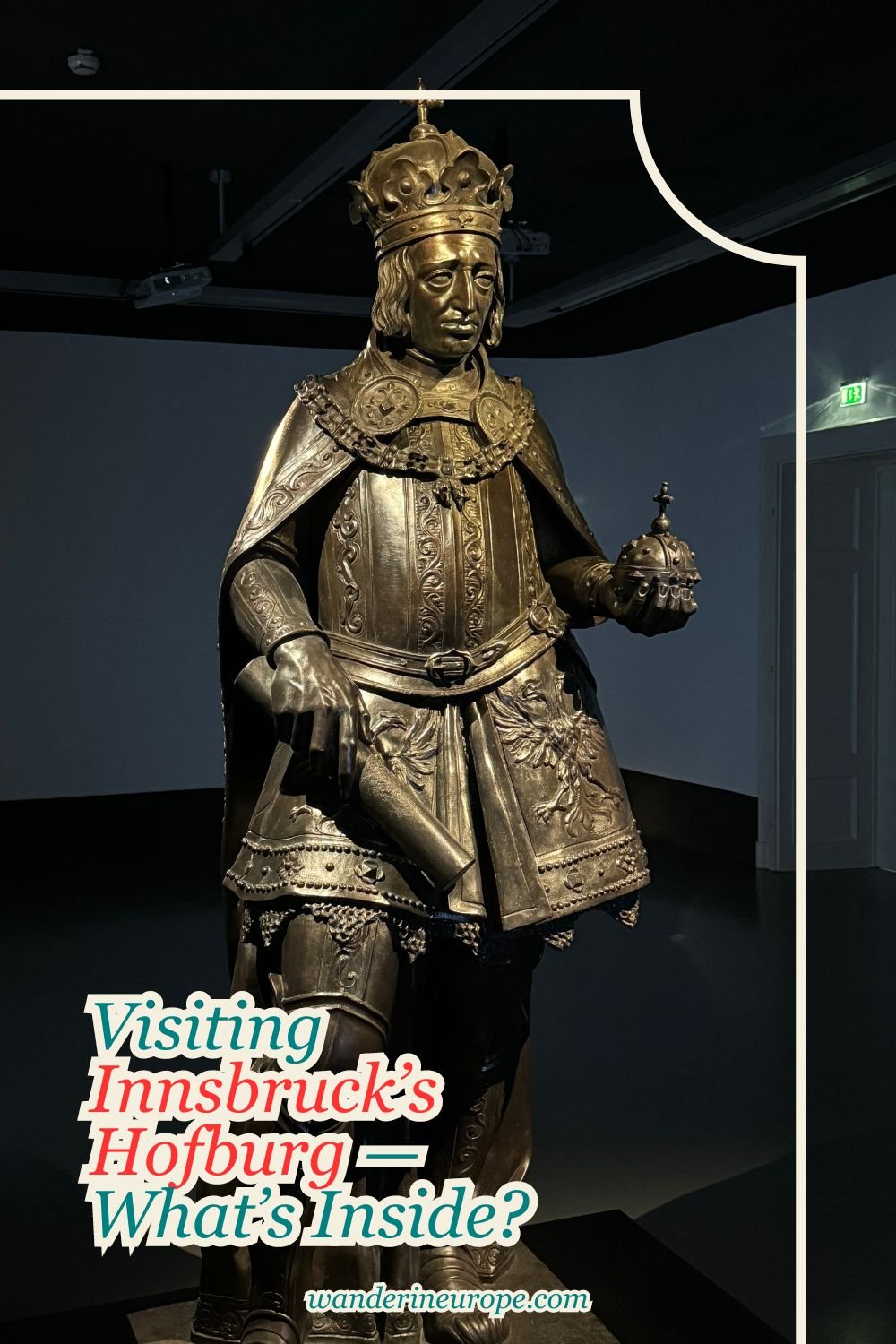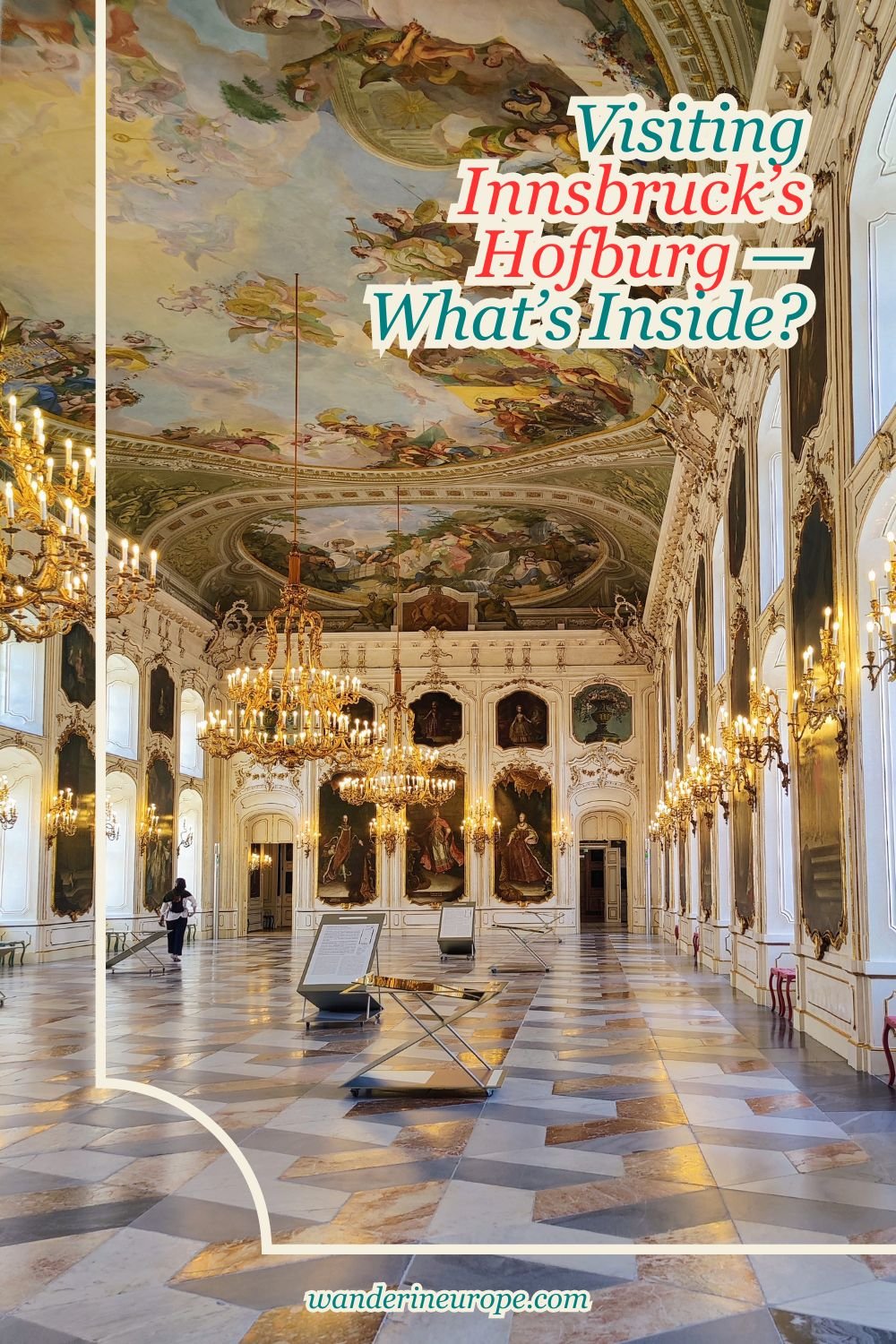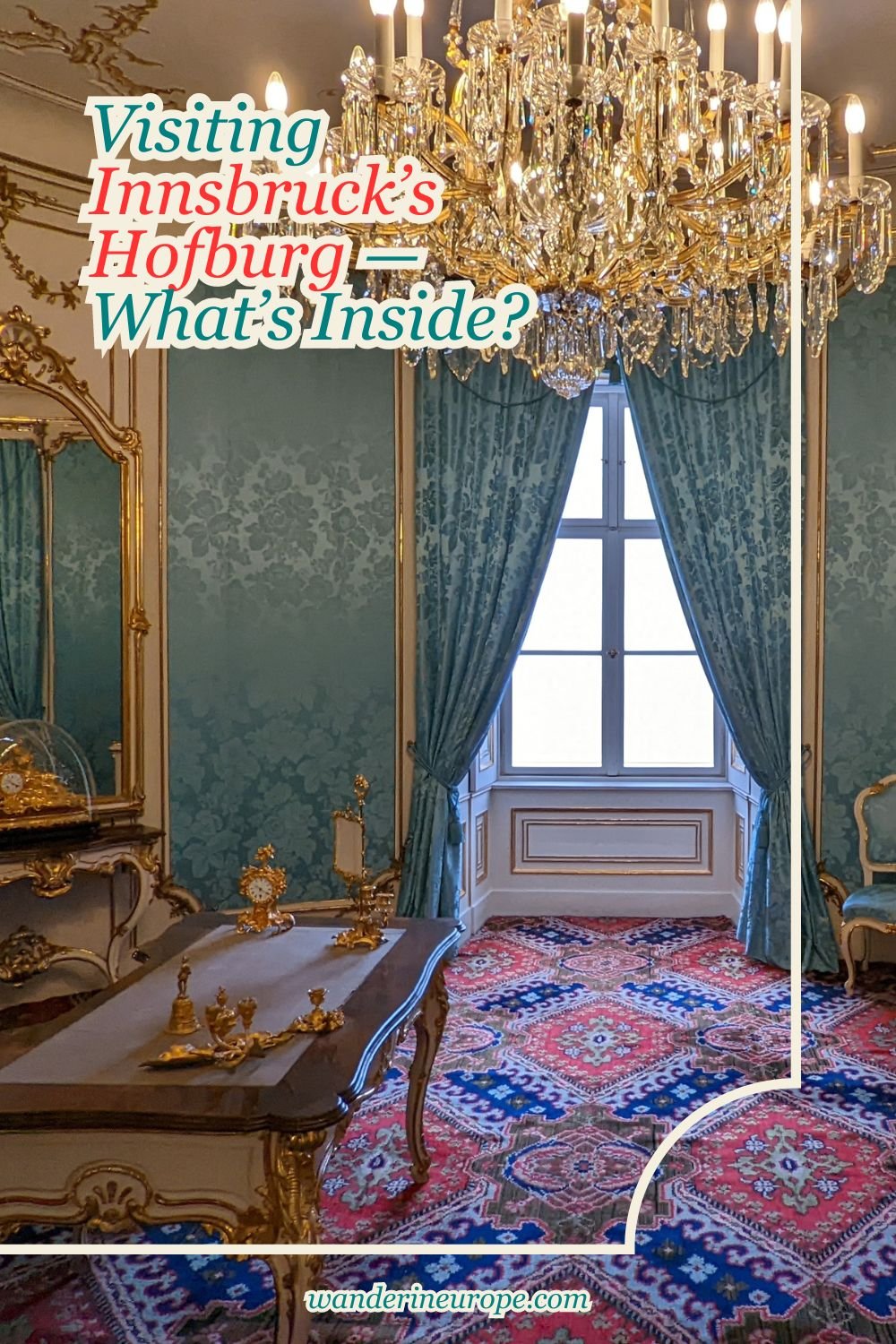Visiting Innsbruck’s Hofburg — What’s Inside?
WanderInEurope is reader-supported. Affiliate links and ads help us keep creating useful content for you.
Surrounded by mountains in every direction, Innsbruck gives a first impression that it’s a destination all about outdoor activities. You know, skiing, hiking, and nature sightseeing. However, that impression changes once you arrive in the city.
Specifically when you start exploring Old Town Innsbruck, you see that Innsbruck is more than just nature. I discovered many picturesque scenes that transported me back in time, along with beautiful and interesting discoveries! And when it comes to beautiful architecture, Innsbruck’s Golden Roof, which is also an unmissable attraction, is only just the beginning! Besides the Innsbruck Cathedral and Innsbruck Hofkirche, another place worth checking out is Innsbruck’s Hofburg.
Let me share with you everything I discovered inside Innsbruck’s Hofburg. 🙂
Expectations


Once you’re on Rennweg, you’re now poised to discover the Hofburg.
Overall, exploring Hofburg offers a glimpse into the lives of the various sovereigns who resided in the palace, from Duke Leopold IV to Maximilian I, and, of course, the ever-famous Empress Maria Theresa.
Like other palaces, beautiful architectural features and mesmerizing artworks await you inside. However, unlike other palaces, Hofburg Innsbruck was not the residence of the emperor or empress for an extended period. Without the heads of the empire continuously upkeeping and improving the palace, Hofburg remained somewhat like a normal palace – beautiful, but not picture-perfect. Therefore, you might want to manage your expectations before entering.
Nevertheless, Hofburg’s history spans seven centuries, which makes it architecturally interesting. Different styles, such as Italian, Gothic, Renaissance, Baroque, and Rococo, are visible. The highlight of a visit is the Giant Hall, which is the most captivating, thanks to the giant frescoes and chandeliers.
Good to know: There are locals who are willing to share everything that’s interesting about their city, including Hofburg. You can ask them to guide you throughout the city for an insightful visit. Don’t forget to ask for insider tips and information about current events for a unique experience!
See this: Memorable Innsbruck Experiences for Less Than $100 (opens in a new tab)
What’s Inside?
After exploring Hofburg, I believe that the overall experience can be divided into two parts: the Modern Exhibition of Maximilian I and the Stately Palace Museum from the time of Maria Theresa.
The modern exhibition of Maximilian I offers a comprehensive exploration of the life and legacy of Emperor Maximilian I, allowing you to discover the many facets of his personality and the ways in which he sparked a new age. Wandering through the exhibits, you’ll find digital reproductions and 3D illustrations on display.
One of the highlights of the exhibits is the digitization of Maximilian I’s famous cenotaph, which allows you to experience this historical masterpiece in a truly unique way. Through the use of digital visualization and animation, you’ll also learn more about the architectural history of the Imperial Palace Innsbruck, gaining a deeper appreciation for the beauty and significance of this stunning structure.
But it’s not just the digital aspects of the exhibits that are impressive. You’ll also have the chance to see first-class exhibits and artifacts from more than 25 lenders from all over the world. This gives you a rare and invaluable opportunity to see historical artifacts and treasures that might otherwise be inaccessible. As you explore the exhibits, you’ll come to understand the many ways in which Emperor Maximilian I influenced and shaped history.
Aside from the exhibits, Hofburg also has more than 20 rooms and areas to explore (palace museum). But among them, the Guard Hall, Giant’s Hall, Council Chamber, Court Chapel, and Anteroom are the best parts you will also like. Then, among these highlights, it’s the Hofburg Chapel that has the most historical significance. The Giant’s Hall, on the other hand, is the most visually stunning.
The Hofburg Chapel has the most historical significance because it was constructed in the very room where Emperor Francis I died. (The emperor passed away suddenly after returning from the theater on 18 August 1765, during the wedding celebrations of Leopold II and Maria Luisa of Spain.)
Following the death of her husband, the chapel became an especially meaningful place for Empress Maria Theresa to remember and honor him. She ordered the room to be transformed into a chapel, complete with stunning Rococo embellishments in white and gold. Today, visitors can admire the exquisite details and imagine the empress’s devotion to her beloved spouse.
When you arrive in the chapel, let your eyes wander. One thing you’re sure to notice is the altar. It features a larger-than-life sculpture group depicting the Blessed Virgin holding the lifeless body of Jesus in her arms, flanked by two mourning female figures. I was struck by the intricate details of these female sculptures, and I think you will be too!
Here’s a fun fact for history buffs: if you examine the altar niche, you’ll notice a cartouche with a crowning scroll featuring the initials “M.T.” These letters stand for none other than Maria Theresa herself! It’s just one more interesting detail to discover in the chapel.
Aside from the altar, the chapel also contains an organ with six registers built by Matthias Maracher from Zell am Ziller in 1857. There are also two matching paintings along the window wall, painted by Johann Georg Dominikus Grasmair in 1732 and 1733, depicting The Visitation and Young Mary in the Temple. Also, notice the wood painting Jesus Embracing the Cross — it dates back to the late sixteenth century.
If you’re exploring the palace in a counter-clockwise direction, you’ll come across the Giant’s Hall after passing through three rooms from the chapel. This magnificent space is the largest and most stunning area of Hofburg.
The Giant’s Hall is so enormous that it can accommodate over 170 guests during an imperial banquet. Its vast size is just one of the many reasons visitors were wowed during the time of the empress. With its magnificent frescoes, sparkling chandeliers, and exquisite Rococo embellishments, the hall is a sight to behold.
Today, the Giant’s Hall has stunning frescoes featuring the children and grandchildren of Emperor Theresa. But, before, it was originally decorated with Hercules frescoes hence its name.
Tip: To avoid straining your neck while admiring the breathtaking frescoes on the ceiling, be sure to take a peek at the strategically placed mirrors in the center of the hall. They provide a perfect view of the ceiling artwork without any discomfort!
Of course, there are many more rooms to explore in Hofburg, and I recommend checking out the palace’s official website for a comprehensive discussion. You can find the link in the resources section of this post. If you prefer to discover the details and history of the palace’s different rooms in person, you can skip the website. The palace museum also offers an audio guide, which allows you to explore the palace at your own pace.
Overall, I think it’s nice to visit Hofburg. But it still has room for improvement. Check them out below.
- Limited furnishings: You may find that the palace lacks furniture, which can make it difficult to imagine what it was like during its heyday.
- No photography: Visitors are not allowed to take photos, even without flash, which can be disappointing for those who want to document their visit.
- Language barriers: Some exhibitions may only be presented in German, which could be a challenge for non-German-speaking visitors.
- Lack of variety: Some visitors may find that the palace exhibits a lot of paintings of royals, which can become repetitive and uninteresting.
Visiting Information
Hofburg Innsbruck offers visitors the chance to explore the rich history and culture of Innsbruck through two types of tickets: the Imperial Apartments and Maximilian 1. The last time I checked Hofburg’s official website, the Imperial Apartments ticket costs around 10 Euros.
Alternatively, visitors can purchase a combo ticket for both attractions at around 15 Euros (with a reduced rate of €10 for those who qualify). Children and teens under the age of 19 can enter for free, while the Imperial Palace is open daily from 9 am to 5 pm (with the last entrance at 4:30 pm).
For those looking to maximize their Innsbruck experience, purchasing an Innsbruck Card is recommended.
The card provides free entry to the city’s museums (including Hofburg), one upwards and one downwards journey on lifts and cable cars, and free travel on the hop-on hop-off Sightseer bus, among other benefits. Swarovski Crystal Worlds and the Hall Mint Museum are also included in the card.
Don’t forget to check Hofburg’s official website for news, announcements, and specific dates when the palace has special opening hours/closed days.
Explore Innsbruck
Beyond Hofburg, Innsbruck has plenty more to offer, from notable landmarks to unique discoveries and amazing views. Click the buttons below to start exploring the city.
For a convenient, unique, or more enriching visit, check out these experiences and services:

From great hotel deals to skip-the-line tickets and affordable eSim to cheap rentals, click here for the best hotel deals and more travel discounts.
Resources
Here’s where I got the information and facts about the Imperial Palace in Innsbruck:

Pin this to save it for later or bookmark it to read anytime.


